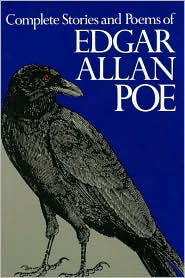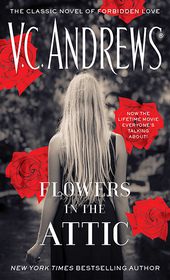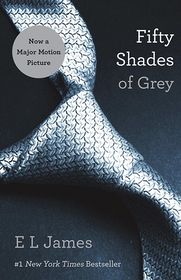Should You Read a Book Before You Let Your Kid Read It?

Rosie: For the first five years of my daughter’s life, I was the literary equivalent of a royal food taster. Before I read her a book—or allowed her to give it a sound-out-the-words test run—it had to be mom approved. While I knew that nothing truly odious would be found in a kiddie book, I was concerned about negative influences, such as bratty dialogue or too-scary themes that would keep my daughter up at night. She could leaf through the pages and point to the duckies and chickies to her heart’s content, but when it was time for our nightly reading, I was determined to keep her literary diet free from unwanted additives. After all, the grim Edgar Allan Poe stories I read as a fifth grader haunted me for years, and I wasn’t about to let the same thing happen to my little one.
Complete Stories and Poems of Edgar Allan Poe
Complete Stories and Poems of Edgar Allan Poe
In Stock Online
Hardcover $30.00
Melissa: Oh man, and there I was, as a fifth grader, hoping a raven would show up at my window or I’d find a corpse behind the basement wall. If you were the royal food taster, keeping out unwanted additives, then I think I might be red dye no. 40. The difficult stories, the precocious children, the pea-soup-vomit-inducing exorcist moments were always the stories I gravitated toward as a child and hope my son gravitates toward as well. I’ll never forget reading V.C. Andrews’ Flowers in the Attic at an age when I shouldn’t have been. It passed from one friend to the next and, when it was my turn, I read it in secret. My parents would have died if they had known about the incest and sexual content. As a goody-two-shoes, I had the feeling I was eating the forbidden fruit in this wonderfully, delicious but safe way: through the pages of a book. I still believe books are safe places to experience a big scary world. I want my son to experience whatever he needs to without pre-approval.
Rosie: That’s an excellent point—I agree that books are safe places to experience all facets of our world. But do our kids need to experience the particularly ugly sides of humanity and, if so, at what age? Every kid is different and some can digest things more easily than others, as our respective reactions to Uncle Edgar attest. In the early years, especially, this is why it was important for me to know exactly what my daughter was reading. But there was a natural progression away from this when she started elementary school, and it was a beautiful thing. She began to read books with classmates and follow recommendations from her teachers, learning to navigate her own limits along the way. Now, as a fourth grader, she has read scores of books that I haven’t read. I rarely step in, but until she is older, I reserve the right to have a say about what’s on her reading list. If she were to come home with a book about graphic wartime torture tactics or, say, something with grown-up sexual themes, such as Fifty Shades of Grey, the royal food taster would come back from the dead to override the decision. We’d definitely discuss the reasons, though.
Melissa: Oh man, and there I was, as a fifth grader, hoping a raven would show up at my window or I’d find a corpse behind the basement wall. If you were the royal food taster, keeping out unwanted additives, then I think I might be red dye no. 40. The difficult stories, the precocious children, the pea-soup-vomit-inducing exorcist moments were always the stories I gravitated toward as a child and hope my son gravitates toward as well. I’ll never forget reading V.C. Andrews’ Flowers in the Attic at an age when I shouldn’t have been. It passed from one friend to the next and, when it was my turn, I read it in secret. My parents would have died if they had known about the incest and sexual content. As a goody-two-shoes, I had the feeling I was eating the forbidden fruit in this wonderfully, delicious but safe way: through the pages of a book. I still believe books are safe places to experience a big scary world. I want my son to experience whatever he needs to without pre-approval.
Rosie: That’s an excellent point—I agree that books are safe places to experience all facets of our world. But do our kids need to experience the particularly ugly sides of humanity and, if so, at what age? Every kid is different and some can digest things more easily than others, as our respective reactions to Uncle Edgar attest. In the early years, especially, this is why it was important for me to know exactly what my daughter was reading. But there was a natural progression away from this when she started elementary school, and it was a beautiful thing. She began to read books with classmates and follow recommendations from her teachers, learning to navigate her own limits along the way. Now, as a fourth grader, she has read scores of books that I haven’t read. I rarely step in, but until she is older, I reserve the right to have a say about what’s on her reading list. If she were to come home with a book about graphic wartime torture tactics or, say, something with grown-up sexual themes, such as Fifty Shades of Grey, the royal food taster would come back from the dead to override the decision. We’d definitely discuss the reasons, though.
Flowers in the Attic (Dollanganger Series #1)
Flowers in the Attic (Dollanganger Series #1)
Paperback $8.99
Melissa: Being aware of what a child is reading is important. Opening up a dialogue about books that may be inappropriate is great, too. That’s what feels right to me. A dialogue. And, you’re pointing out something important here. There’s a long period of time when there is no outside influence and you control the literature that comes in and out of your home. But once that ends, how hands-on do you have to be? Reading every book before a child does sounds incredibly time consuming. It also implies some kind of stamp-of-approval process. And placing certain books on a forbidden or banned list…that sounds really dangerous to me. Real life can be very ugly and giving children a safe space to explore and experience the ugly is important. I think we can (and need to) put faith in our kids. That they will gravitate toward books they can handle and when they can’t, they’ll step away.
Rosie: Dialogue and faith: ding-ding-ding! I think you just found the magic recipe. If we give our kids a strong foundation and have open dialogue, then trusting them to make their own choices and listen to their intuition is the natural—and crucial—next step. Sure, they’ll make some missteps along the way, but those will be valuable learning experiences. As kids grow and mature, a parent’s approach can change right along with them. I can’t imagine pre-screening everything children read once they’re headlong into meaty fiction and other substantial books, but I still think certain limits have a place while the learning process is underway. Banning books? Never. Requiring hazmat suits in the presence of red dye no. 40? Not a chance. Gently leading an elementary schooler away from the Fifty Shades display table in favor of the classics section? You bet.
Melissa: Being aware of what a child is reading is important. Opening up a dialogue about books that may be inappropriate is great, too. That’s what feels right to me. A dialogue. And, you’re pointing out something important here. There’s a long period of time when there is no outside influence and you control the literature that comes in and out of your home. But once that ends, how hands-on do you have to be? Reading every book before a child does sounds incredibly time consuming. It also implies some kind of stamp-of-approval process. And placing certain books on a forbidden or banned list…that sounds really dangerous to me. Real life can be very ugly and giving children a safe space to explore and experience the ugly is important. I think we can (and need to) put faith in our kids. That they will gravitate toward books they can handle and when they can’t, they’ll step away.
Rosie: Dialogue and faith: ding-ding-ding! I think you just found the magic recipe. If we give our kids a strong foundation and have open dialogue, then trusting them to make their own choices and listen to their intuition is the natural—and crucial—next step. Sure, they’ll make some missteps along the way, but those will be valuable learning experiences. As kids grow and mature, a parent’s approach can change right along with them. I can’t imagine pre-screening everything children read once they’re headlong into meaty fiction and other substantial books, but I still think certain limits have a place while the learning process is underway. Banning books? Never. Requiring hazmat suits in the presence of red dye no. 40? Not a chance. Gently leading an elementary schooler away from the Fifty Shades display table in favor of the classics section? You bet.
Fifty Shades of Grey (Fifty Shades Trilogy #1)
Fifty Shades of Grey (Fifty Shades Trilogy #1)
By E L James
In Stock Online
Paperback
$14.99
$17.99
Melissa: Okay, see, now my whole argument is thrown up in arms because the entire world has pre-screened Fifty Shades of Grey for me. Thank you world! All kidding aside, I do agree that all of us want our children to veer toward good literature, whether we steer them there or let them drive. I guess I’d prefer to leave it to young readers to decide the definition of ‘good’ and that definition may very well include the deliciously bad.
Do you think you should pre-screen the books your children read? And if so, for how long?
Melissa: Okay, see, now my whole argument is thrown up in arms because the entire world has pre-screened Fifty Shades of Grey for me. Thank you world! All kidding aside, I do agree that all of us want our children to veer toward good literature, whether we steer them there or let them drive. I guess I’d prefer to leave it to young readers to decide the definition of ‘good’ and that definition may very well include the deliciously bad.
Do you think you should pre-screen the books your children read? And if so, for how long?


